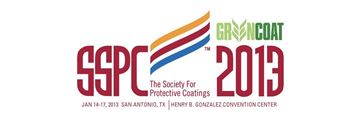Many tall and large structures have been constructed and operated under harsh environmental conditions. It has been required to protect steel structures from a variety of corrosive environments over their service life. In order to meet such requirements, continuous research has been aimed at increasing coating system durability, extending service life, and reducing life-cycle costs. The solvent-borne FEVE (Fluoro-Ethylene Vinyl Ether) type fluoropolymer coatings) were invented as top coats of protective coating systems in 1983. Since then, much data has been gathered concerning FEVE system performance data were collected in actual service on steel structures, and by laboratory testing in simulated service environments. In-service performances of FEVE systems have been excellent even after 30 years of outdoor exposure. The FEVE top coats are highly resistant towards exposure to ultraviolet rays, where they significantly outperform the conventional polyurethane top-coat coatings in gloss retention and chalking resistance (also termed “weathering resistance”). These characteristics of fluoropolymers come from their strong chemical bonding between carbon and fluorine atoms in the molecular structure of FEVE. Because of its outstanding and desirable properties, the Japan Road Association specified the FEVE top coat system for C5 class service; i.e., atmospheric corrosivity category type environments as defined by ISO 12944-2 and ISO 9223. In 2014, the FEVE fluoropolymer was also included in the ISO12944-5-2018 standard. This paper describes performance of FEVE top-coated coating systems, cost reduction of coating system material and installation, reduction of VOC (Volatile Organic Compounds) emissions, and improvements of LCC (Life Cycle Cost). Thick FEVE top coats reduce the number of required coats per coating system, improve coating system service life (due to improved top coat durability), and further reduce LCC. These benefits were verified by testing in actual outdoor environment, and laboratory testing in simulated environments. The performance results were compared with the past design solvent-borne (S/B) fluoropolymer coating systems. FEVE top-coated systems had been successfully applied to large steel structures such as bridges, railway bridges, and storage tanks, etc.
Key words: ”Fluoropolymer topcoat“, ” FEVE“, ” Water-borne“, “Solvent-Borne”, ” VOC“, ” Protective performance“, “C5 class service coating system” “LCC” “Weathering performance”




